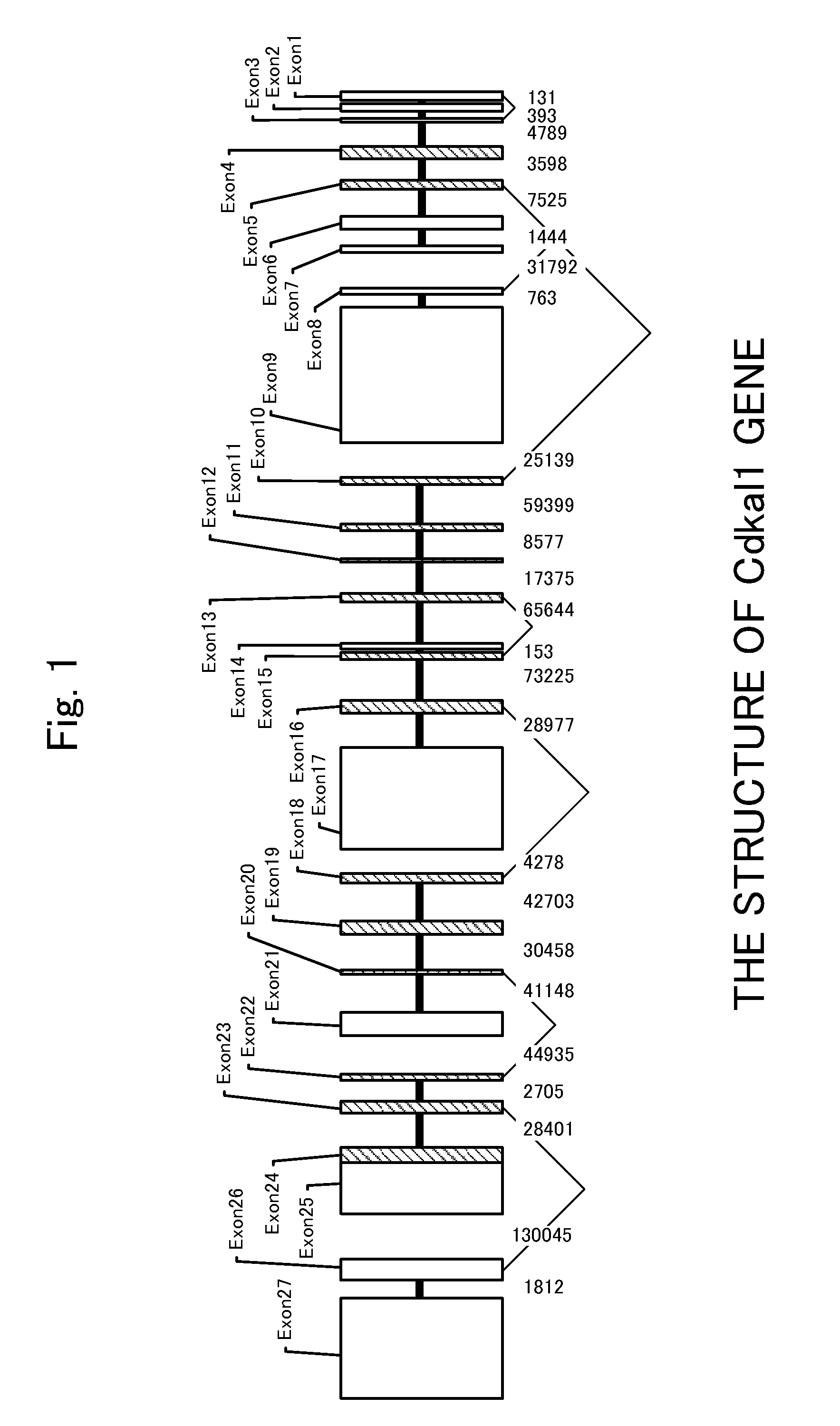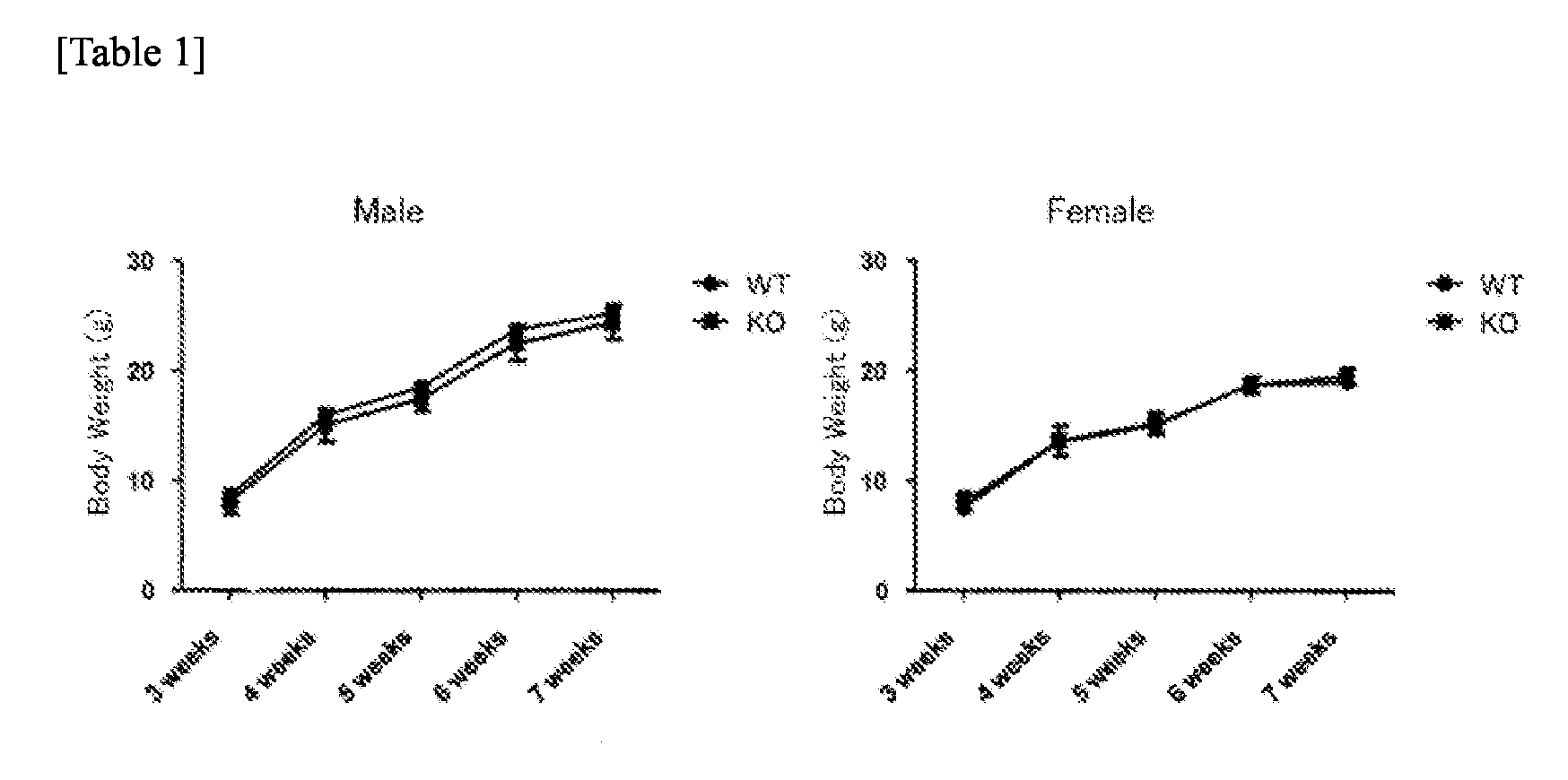Non-human mammalian animal model for type 2 diabetes
a type 2 diabetes, non-human technology, applied in the field of non-human mammalian animal models for type 2 diabetes, to achieve the effect of more accurate carrying ou
- Summary
- Abstract
- Description
- Claims
- Application Information
AI Technical Summary
Benefits of technology
Problems solved by technology
Method used
Image
Examples
Embodiment Construction
[0037]The present invention provides the non-human mammalian animal model for type 2 diabetes, which is deficient in the function of the Cdkal1 gene specifically on the chromosome of the β cell of the pancreas.
[0038]The Cdkal1 gene is known as a risk factor of type 2 diabetes (see Science (2007) 316, 1331; Science (2007) 316, 1336; Science (2007) 316, 1341; Nat Genet (2007) 39, 770).
[0039]However, the function of the Cdkal1 expressing from the Cdkal1 gene is not yet clarified, and the association of the Cdkal1 gene with type 2 diabetes is still left unclear.
[0040]As a result of extensive researches on the association of the Cdkal1 gene with type 2 diabetes, it has been found that persons having a specific mutation (a single nucleotide polymorphism: SNP) in the Cdkal1 gene region demonstrate a significantly reduced insulin secretion from the β cell of the pancreas compared with persons having no such specific mutation, leading to the likelihood to causing an easier development of typ...
PUM
| Property | Measurement | Unit |
|---|---|---|
| energy consumption | aaaaa | aaaaa |
| weight | aaaaa | aaaaa |
| structure | aaaaa | aaaaa |
Abstract
Description
Claims
Application Information
 Login to View More
Login to View More - R&D
- Intellectual Property
- Life Sciences
- Materials
- Tech Scout
- Unparalleled Data Quality
- Higher Quality Content
- 60% Fewer Hallucinations
Browse by: Latest US Patents, China's latest patents, Technical Efficacy Thesaurus, Application Domain, Technology Topic, Popular Technical Reports.
© 2025 PatSnap. All rights reserved.Legal|Privacy policy|Modern Slavery Act Transparency Statement|Sitemap|About US| Contact US: help@patsnap.com



